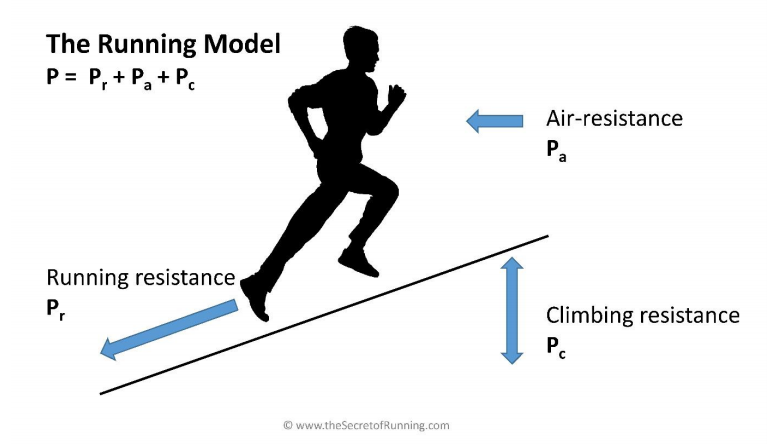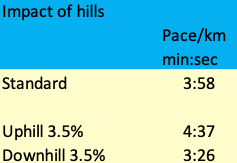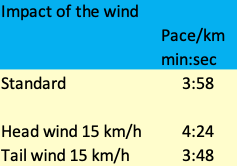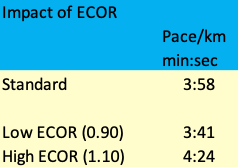Why is racing with power superior to racing at pace?

Traditionally, runners use pace as a surrogate for their effort during racing. Theoretically, the effort during running is defined by the power of the ‘human engine’. In our book “The Secret of Running" (www.thesecretofrunning.com) we have shown that in running the total required power P is the sum of the power required to overcome the running resistance Pr, the air-resistance Pa and the climbing resistance Pc, as indicated in the figure below.

In this paper, we will analyze the impact of the 3 resistances on the correct pace. We will show that in order to maintain a constant effort/power, it may be required to adapt the pace significantly (by 15% or even more). Consequently, racing with power is superior to racing at pace, particularly when the 3 resistances are not constant during a race.
The impact of hills (climbing resistance)
Uphill the required power increases and downhill it decreases as a result of gravity. As it is always best to run at constant power, this means that uphill you should reduce your pace to maintain constant power. Uphill the reverse is the case. The table below shows the impact of a hill with a gradient of 3.5% on the correct pace of the author (Net Functional Threshold Power 250 Watt, body weight 58 kg, P= 4.31 Watt/kg). Obviously, the impact will be even bigger at steeper gradients, as the energy cost of hills is proportional to the gradient!

The impact of the wind (air-resistance)
Facing a head wind, the required power increases, while it decreases in a tail-wind. As it is always best to run at constant power, this means that in a head wind you should reduce your pace to maintain constant power. In a tail wind the reverse is the case. The table below shows the impact at a wind speed of 15 km/h (at breast height) on the correct pace of the author. Obviously, the impact will be even bigger at higher wind speeds, as the energy cost of the air-resistance is proportional to the square of the wind speed!

The impact of the energy cost of running (running resistance)
In our book, we analyzed the net energy cost of running (ECOR), which is defined as the power required to overcome the running resistance, divided by the running speed. Obviously, the ECOR of a trail or cross will be higher than the ECOR of an asphalt pavement, which has a lower resistance.
The ECOR is typically 0.98 kJ/kg/km, which corresponds to a Gross ECOR of 1.27 kJ/kg/km. Of course, this number will not be the same for everyone: it depends on many factors, including body posture, fuel mix and running form. Generally, it is believed that the Net ECOR of highly efficient elite runners could be as low as 0.90 kJ/kg/km, whereas in inefficient joggers it could be as high as 1.10 kJ/kg/km. Obviously, a lower ECOR means that you are running more efficiently and consequently you can run faster.
The table below shows the impact of the ECOR on the correct pace of the author. Obviously, Hans could run much faster if he could reduce his ECOR to 0.90 kJ/kg/km! To be honest, we have not found the answer how he could achieve this….

Conclusions and outlook
The examples prove quite clearly that racing at constant power is superior to racing at constant pace, particularly when the conditions (resistances) during the race are not constant. At any significant gradients and wind speeds, it will be detrimental or even impossible to run at a constant pace. Similarly, it will be necessary to adapt the pace in races with tougher footing, such as trails or crosses.
Theoretically, running at constant power is the best strategy to provide the best results. When running at constant power, the pace will be automatically reduced in tough sections (uphill, head wind, soft footing). In the easier sections of the race or workout, the pace will increase automatically.
Unfortunately, the present state-of-the-art running power meters do not yet reflect the impact of the wind and the footing correctly. This means that presently the main advantage of running power meters is to maintain constant power in hilly courses.
If you would like to purchase The Secret of Running (or the German version, Das Geheimnis des Laufens), you can do so at the bottom of store.stryd.com.

